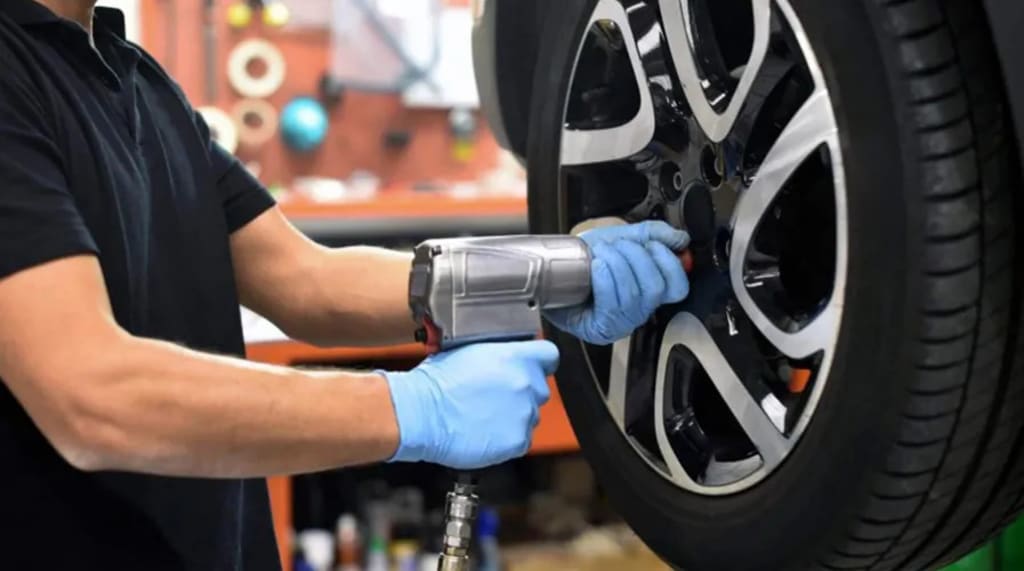
Tires are the unsung heroes of your vehicle, connecting it to the road and playing a vital role in safety, handling, and fuel efficiency. Proper tire care is not only crucial for your car’s performance but also for your overall driving experience. In this comprehensive guide, we’ll delve into essential tire care tips to keep you rolling smoothly, safely, and confidently on the road.
1. Tire Pressure: The Foundation of Safety and Efficiency
Maintaining the correct tire pressure is essential for several reasons. Underinflated tires can lead to decreased fuel efficiency, uneven tread wear, and compromised handling. Overinflated tires can result in a harsh ride and reduced traction.
Check your tire pressure at least once a month and before long trips. Refer to your car’s owner’s manual or the sticker on the driver’s side door jamb for the recommended tire pressure. Invest in a quality tire pressure gauge for accurate readings.
2. Tire Tread Depth: The Key to Traction
Tire tread depth directly affects your car’s grip on the road, especially in wet or slippery conditions. Bald tires are more prone to hydroplaning and reduced traction.
Check your tire tread depth regularly using the “penny test.” Insert a penny into the tread grooves with Lincoln’s head facing down. If you can see the top of Lincoln’s head, it’s time to replace your tires.
3. Rotation and Balancing: Even Wear for Longevity
Tire rotation involves moving tires from one position to another to ensure even tread wear. This helps extend the life of your tires and maintains optimal handling.
Balancing involves distributing the weight of the tire and wheel assembly evenly. Unbalanced tires can cause vibrations and uneven wear. Have your tires rotated and balanced as recommended by your car’s manufacturer or your mechanic.
4. Wheel Alignment: Keeping on the Straight and Narrow
Proper wheel alignment ensures that your tires are parallel and make consistent contact with the road. Misaligned wheels can result in uneven tread wear and poor handling.
If you notice your car pulling to one side or your steering wheel isn’t centered when driving straight, it’s time to have your wheel alignment checked and adjusted if necessary.
5. Regular Inspections: Eyes on Your Tires
Regular visual inspections of your tires can reveal potential issues before they escalate. Look for signs of uneven wear, cracks, bulges, or punctures. Address any damage promptly to prevent further problems.
6. Seasonal Considerations: Matching Tires to Conditions
Consider using seasonal tires to match the weather conditions. Winter tires are designed to provide better traction in cold temperatures and snowy or icy conditions. Summer tires offer improved performance in warm weather.
All-season tires are a versatile option, but remember that they are a compromise between summer and winter tires and may not perform optimally in extreme conditions.
7. Spare Tire Maintenance: A Lifesaver in Need
Don’t forget about your spare tire – it’s your backup plan in case of a flat. Regularly check the spare tire’s pressure and ensure it’s in good condition. If your car has a full-size spare, include it in your tire rotation schedule.
8. Avoid Overloading: Staying Within Limits
Overloading your vehicle puts extra stress on your tires and can lead to premature wear and reduced handling. Check your car’s maximum load capacity in the owner’s manual and avoid exceeding it.
9. Drive Smoothly: Gentle Handling for Tire Longevity
Your driving habits play a role in tire wear. Avoid sudden starts, stops, and sharp turns. Smooth acceleration and braking can help preserve your tires and improve fuel efficiency.
10. Proper Storage: Caring for Spare Tires
If you have seasonal tires or a spare tire not in use, proper storage is essential. Store tires in a cool, dry place away from direct sunlight. If you’re storing tires for an extended period, consider using tire covers to protect them from ozone and UV damage.
11. Tire Rotation Patterns: Maximizing Wear
Different tire rotation patterns are recommended for different types of drivetrains (front-wheel drive, rear-wheel drive, all-wheel drive). Consult your car’s manual or a professional mechanic to determine the best rotation pattern for your vehicle.
12. Replace When Necessary: Knowing When It’s Time
Even with meticulous care, tires eventually wear out. If your tires have reached the legal tread depth limit (often 2/32 of an inch), it’s time for replacements. Additionally, consider replacing tires if they are older than six years, even if the tread appears to be in good condition.
In Conclusion
Tire care isn’t just about maintaining your vehicle’s appearance – it’s about ensuring your safety, comfort, and performance on the road. By following these comprehensive tire care tips, you’re taking a proactive approach to keeping your tires in prime condition. Remember that your tires are your vehicle’s first line of defense against the road, so investing time and effort in their maintenance is an investment in your overall driving experience. With proper care, your tires will keep you rolling smoothly and confidently wherever the road takes you.






Comments
There are no comments for this story
Be the first to respond and start the conversation.